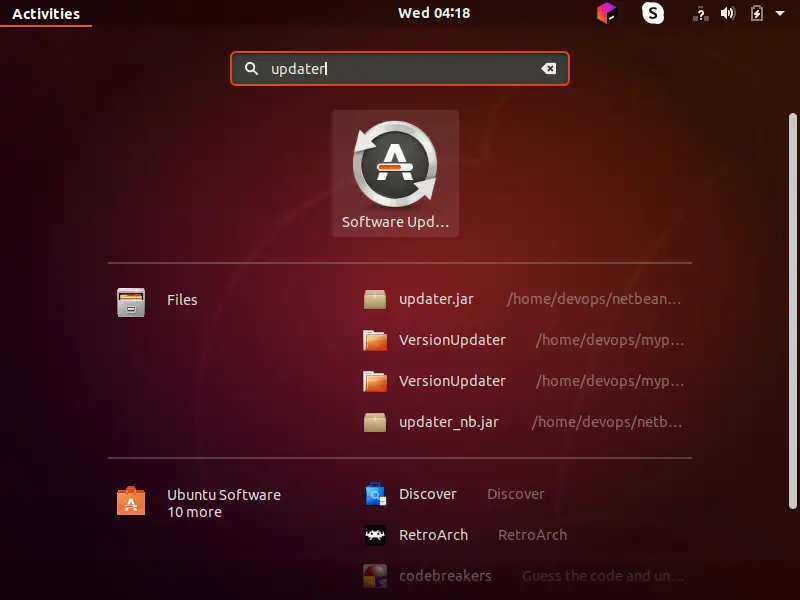Linux Software Packages
Linux provides different methods for installing software. You can install software from the standard Ubuntu software repositories using the Ubuntu Software Center, from outside of the standard Ubuntu software repositories, or by compiling source code. However, what if you need to uninstall a program?
Apt supports patterns to match package names and options to list installed (-installed) packages, upgradeable (-upgradeable) packages or all available (-all-versions) package versions. Use the DPKG program. Another alternative that you can use to list the installed software packages on your Ubuntu VPS is the dpkg command. Sudo dpkg -l. One of the several duties of a system administrator is to install and manage software on a computer system-Linux in this case and in order keep track of installed/available software packages on your system, you can learn, and/or keep in mind a few quick commands. In this article, we will explain how. Microsoft's Linux Software Repository is comprised of multiple sub-repositories: prod – The Production sub-repository is designated for packages intended for use in production. These packages are commercially supported by Microsoft under the terms of the applicable support agreement or program that you have with Microsoft. Software packages allow the easy installation of applications (AKA apps, programs etc.). Examples of applications include an accounts package or a CAD program. Puppy Linux like most versions of Linux come with a lot of built in programs.
If you’ve installed software from the Ubuntu software repositories using the Ubuntu Software Center, you can use the Ubuntu Software Center to uninstall that software as well. However, if you’re more comfortable using the command line, we’ll show you an easy way to see what’s installed on your system and uninstall programs.
If you have an idea of what you want to uninstall, but you don’t know the exact name, see our article about finding out exact package names in Linux. You can also use the “dpkg” command to see a list of all installed packages on your computer, press “Ctrl + Alt + T” to open a Terminal window. Type the following command at the prompt and press “Enter”.
dpkg --list
Disney pc games free download. Disney Games. Viewing games 1 to 10. Aladdin Free Download; Jungle Book Free Download; Lion King Free Download; Disney's Ariel the Little Mermaid Free Download; Pocahontas Free Download; Mickey Mouse - Fantasia Free Download; Mickey Mania - Timeless Adventures of Mickey Mouse Free Download.
NOTE: There are two dashes before “list”.
Scroll through the list of installed packages in the Terminal window to find the one you want to uninstall. Hack sql server password. Note the full name of the package.
To uninstall a program, use the “apt-get” command, which is the general command for installing programs and manipulating installed programs. For example, the following command uninstalls gimp and deletes all the configuration files, using the “--purge” (there are two dashes before “purge”) command.
sudo apt-get --purge remove gimp
Enter your password when prompted and press “Enter”.
NOTE: The password does not display as you type it. However, you can choose to display asterisks as you type the password.
The uninstallation process begins and a summary of the actions to be taken displays. When asked if you want to continue, type a “y” and press “Enter”.
The installation process continues. When it’s done, type “exit” at the prompt and press “Enter” to close the Terminal window, or click the “X” button in the upper-left corner of the window.
If you don’t want to remove the configuration files, simply leave out the “--purge” command, as shown in the following command.

sudo apt-get remove gimp
As discussed in this article, programs installed in Linux depend on other packages to function. When you uninstall a program, there may be packages that the uninstalled program depended upon that are no longer used. To remove any unused packages, use the “autoremove” command, as shown in the following command.
sudo apt-get autoremove
Best Free Linux Programs
You can combine the two commands for removing a program and removing dependencies that are no longer being used into one, as shown below (again, two dashes before “auto-remove”).
sudo apt-get purge --auto-remove gimp
If you’re short on space, you can use the “clean” command to remove downloaded archive files, as shown below.
sudo apt-get clean
Kali Linux Software Packages
This command removes the aptitude cache in “/var/cache/apt/archives”. When you install a program, the package file is downloaded and stored in that directory. You don’t need to keep the files in that directory. However, the only drawback of deleting them, is that if you decide to install any of those programs again, the packages would have to be downloaded again.
The “apt-get” is a handy tool that makes downloading, installing, and uninstalling programs quick and easy. For more information about using the “apt-get” command, type “apt-get” at the prompt and press “Enter”.
READ NEXT- › What Does “FWIW” Mean, and How Do You Use It?
- › How to Automatically Delete Your YouTube History
- › What Is “Mixed Content,” and Why Is Chrome Blocking It?
- › How to Manage Multiple Mailboxes in Outlook
- › How to Move Your Linux home Directory to Another Drive